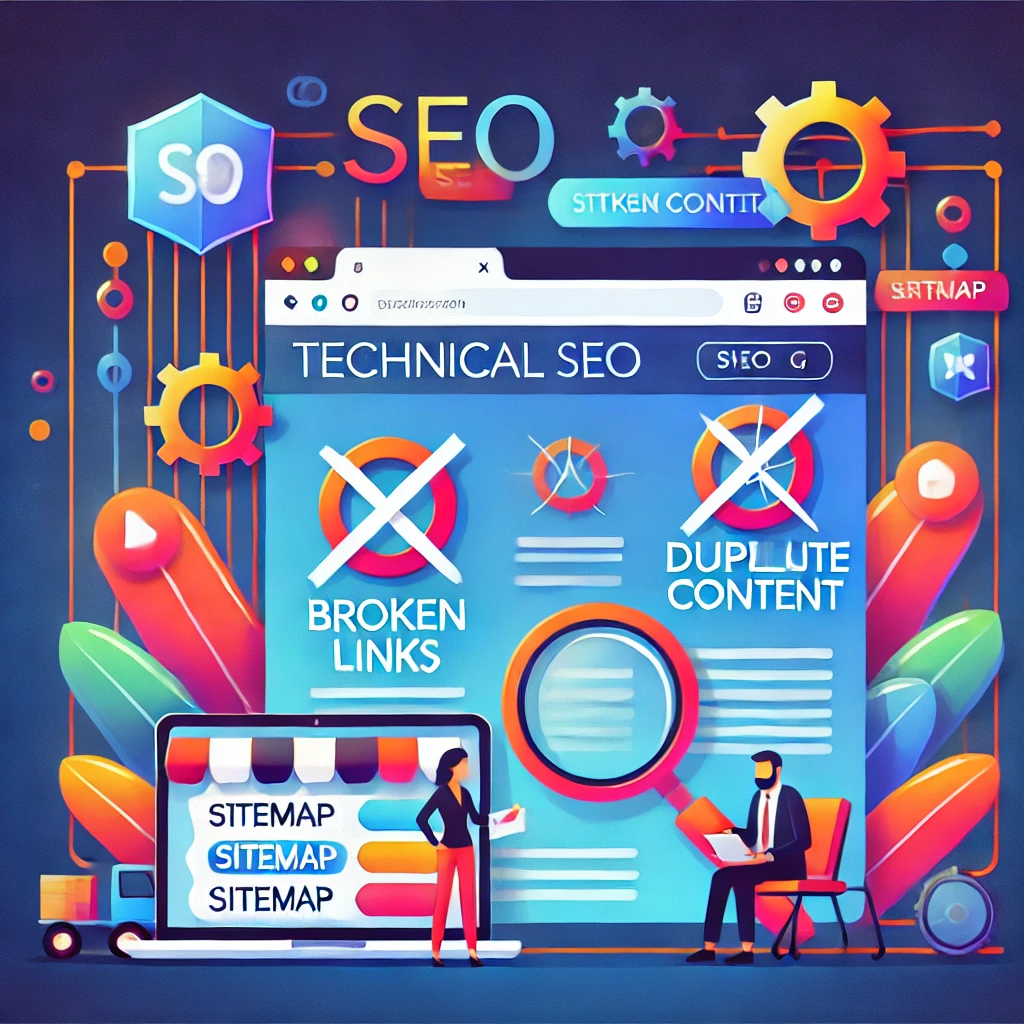In today’s digital world, a website is not just an online presence—it’s your 24/7 sales representative. But what happens when this representative fails to perform and doesn’t show up where it matters the most: on search engine result pages (SERPs)?
If your website is struggling to rank, you’re not alone. In this comprehensive guide, we’ll uncover the Top 7 Reasons Why Your Website Is Not Ranking, and provide actionable solutions to turn the tide in your favor. Let’s dive in!
1. Lack of Proper Keyword Research
The Problem: Many websites fail to rank because they target keywords that are either too competitive or irrelevant to their niche. Without proper keyword research, your content may not align with what users are searching for.
Solution:
- Use tools like Google Keyword Planner, SEMrush, or Ahrefs to identify high-volume, low-competition keywords.
- Focus on long-tail keywords to target specific user intent.
- Analyze search intent to match your content with what users actually need.
- Consider regional keywords if your business serves a specific geographic area.
Pro Tip: Use conversational keywords that mimic how people ask questions. For example, instead of “best shoes,” try “what are the best shoes for running?”
Fun Fact: Around 50% of search queries are four words or longer. So, never underestimate the power of long-tail keywords!
Additional Insight: Failing to account for voice search optimization is another pitfall. With the rise of smart speakers, optimizing for voice search can capture a wider audience. People are more likely to ask full questions when using voice search, so adapt your strategy accordingly.
2. Poor On-Page SEO
The Problem: Neglecting on-page SEO elements like meta titles, descriptions, header tags, and image alt texts can harm your ranking potential. Poor internal linking can also weaken your site’s structure.
Solution:
- Optimize your meta titles and descriptions to include your primary keyword.
- Structure your content with H1, H2, and H3 tags for clarity.
- Use descriptive alt text for images to improve accessibility and SEO.
- Include internal links to related content to enhance user navigation and keep users on your site longer.
Table: Checklist for On-Page SEO
| Element | Best Practices |
|---|---|
| Meta Title | Include primary keyword; keep it under 60 characters |
| Meta Description | Summarize content; use 150-160 characters |
| Header Tags | Structure content with H1, H2, H3 tags |
| Image Alt Text | Describe the image using keywords |
| Internal Links | Add 2-3 internal links per post to related content |
Link: On-Page SEO Tips on NewsPopHub
Fun Fact: Well-optimized meta descriptions can increase your click-through rate by up to 5.8%!
Pro Tip: Add schema markup to your pages to enhance how they appear in search results. Rich snippets can significantly improve your visibility.
3. Low-Quality Content
The Problem: Search engines prioritize high-quality, relevant content. If your content is thin, outdated, or unoriginal, your rankings will suffer.
Solution:
- Conduct thorough research before creating content to ensure accuracy.
- Provide actionable insights and real-world examples to your audience.
- Regularly update your old blog posts to keep them fresh and relevant.
- Use multimedia like videos, infographics, and podcasts to enhance user engagement.
Pro Tip: Aim for content that is at least 1,500-2,500 words long, as longer articles tend to perform better in search rankings. Focus on depth, not just length.
Fun Fact: Content with visuals gets 94% more views than text-only articles. Use charts, images, and infographics to break up dense information.
Deep Dive: Content freshness matters. Google’s algorithm often rewards recently updated content, especially for topics that evolve over time. For example, if you’re in the tech industry, your content about AI tools needs to reflect the latest trends and advancements.
4. Slow Website Speed
The Problem: A slow-loading website frustrates users and increases bounce rates, signaling to search engines that your website is not user-friendly. This issue is more pronounced on mobile devices.
Solution:
- Compress images and use lazy loading to ensure faster page loads.
- Minimize JavaScript and CSS files to improve page rendering.
- Use a Content Delivery Network (CDN) for faster load times.
- Enable browser caching to reduce server response times and improve overall performance.
Impact of Website Speed on Bounce Rate
| Load Time (Seconds) | Bounce Rate (%) |
|---|---|
| 1-3 | 32 |
| 4-6 | 53 |
| 7+ | 70 |
Government Resource: PageSpeed Insights by Google
Pro Tip: Websites loading in under 2 seconds have significantly higher conversion rates. Run regular speed tests and make adjustments to maintain optimal performance.
Fun Fact: Users form an opinion about a website within 50 milliseconds, and slow speeds can tarnish this first impression.
5. Weak Backlink Profile
The Problem: Backlinks are like votes of confidence for your website. If you have few or low-quality backlinks, your site’s authority diminishes. Spammy or irrelevant backlinks can also harm your SEO.
Solution:
- Reach out to industry leaders for guest posting opportunities to earn quality backlinks.
- Create shareable content that naturally attracts backlinks from reputable sources.
- Use tools like Moz or Ahrefs to identify and disavow toxic backlinks that could harm your rankings.
- Focus on building links from government (.gov) or educational (.edu) domains for added credibility.
Pro Tip: Focus on earning backlinks from authoritative websites in your niche. Content that offers unique insights or solves specific problems is more likely to attract quality links.
Link: How to Build Backlinks Effectively
Fun Fact: Sites with a strong backlink profile rank 5x higher than those without! Backlinks remain one of the top three Google ranking factors.
6. Not Mobile-Friendly
The Problem: Over 60% of web traffic comes from mobile devices. If your site isn’t mobile-responsive, you’re alienating a large audience and missing out on significant traffic.
Solution:
- Use responsive web design to ensure your site adapts to all screen sizes.
- Test your website on multiple devices to identify and fix any layout or usability issues.
- Check your site’s mobile-friendliness using Google’s Mobile-Friendly Test.
- Simplify navigation for smaller screens and prioritize touch-friendly elements.
Government Resource: Google’s Mobile-Friendly Test
Fun Fact: Mobile-friendly websites rank higher on Google’s mobile-first index!
Pro Tip: Use Accelerated Mobile Pages (AMP) to speed up mobile performance. AMP can improve load times and reduce bounce rates on mobile.
7. Ignoring Technical SEO
The Problem: Issues like broken links, duplicate content, and improper URL structures can hinder search engine crawlers from indexing your site effectively. This can lead to lower visibility on SERPs.
Solution:
- Fix broken links and create 301 redirects where necessary to maintain link equity.
- Use canonical tags to handle duplicate content and avoid penalties.
- Ensure a clean and user-friendly URL structure that reflects your site hierarchy.
- Regularly audit your site for technical issues using tools like Screaming Frog or Google Search Console.
Pro Tip: Submit an updated sitemap to Google Search Console regularly to help search engines index your content more efficiently.
Fun Fact: Websites with clean technical SEO experience 50% faster indexing by



